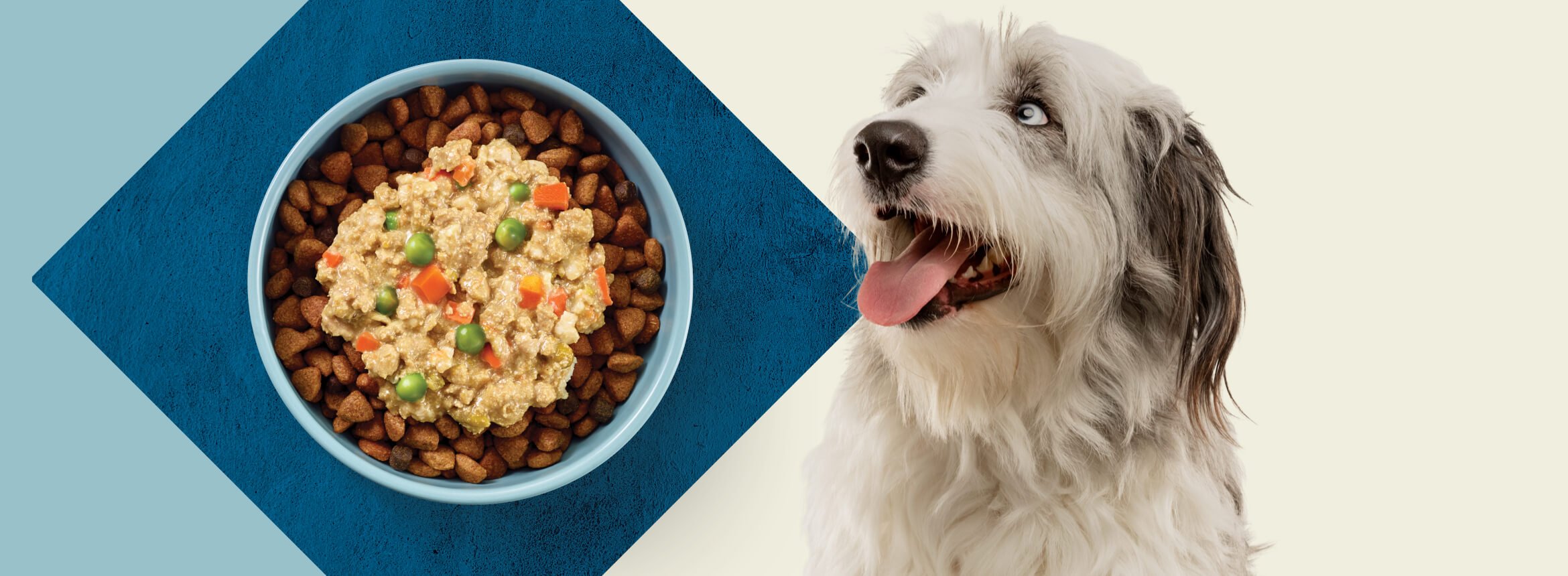Walk down the pet food aisle and you’ll see more options than ever — from crunchy dry dog food to savory wet food, and now fresh meals, too. Fresh dog food is one of the latest trends in pet nutrition, and it’s quickly gaining attention as more brands introduce their own options.
What Is Fresh Dog Food?
Defining fresh dog food can be a little subjective, as it might mean different things to different people. However, there are some common characteristics:
- It usually needs to be kept in the refrigerator or freezer to stay fresh
- It's typically cooked, rather than raw
- You can often see fruits and vegetables in the mix
While the ingredients and how it’s made can vary from brand to brand, the best way to find out which fresh food is ideal for your dog is to learn which ingredients are beneficial based on your dog’s age and size, and to look for those ingredients on the label of the dog food package.

Can I Mix Dry Dog Food with Fresh Dog Food?
Yes, you can safely mix dry and wet dog food or fresh food. Pairing them can make mealtime more exciting for your pal by blending different textures, smells, and flavors.
Some pups may eat better when the two are served together — especially picky eaters who enjoy dry dog food more with a bit of fresh food mixed in.
With that said, every dog is unique. If your best friend has health conditions, food sensitivities, or specific dietary needs, it’s always best to check with your veterinarian before making changes to their meals. Correct portioning is key — and we’ll get to that later.
Benefits of Mixing Fresh Dog Food with Dry Dog Food
Adding fresh dog food to dry dog food isn’t about replacement — it’s about bringing more variety to your buddy’s bowl while sticking to a routine you already know works.
Extra hydration:
Like wet food, fresh food naturally contains more moisture than dry dog food, which can help support healthy digestion and hydration.
Keeps mealtime interesting:
Switching between fresh and dry dog food, or serving them together, adds variety in flavor and texture that can help keep your pup engaged at every meal.
Flexible feeding:
Fresh food can be served as a meal, mixed in, or used as a topper — giving you flexibility come mealtime.
When combined, fresh dog food and dry dog food create meals that bring balance, variety, and joy in every bowl.
How to Mix Fresh Dog Food with Dry Dog Food
Mixing fresh dog food with dry dog food is simple, but transitioning slowly is key to avoiding tummy trouble. Before getting started, make sure to refer to the feeding guidelines on each package of your dog’s food to be sure you’re feeding the right portions so you don’t exceed their daily caloric intake.
Start small:
Begin with a small scoop of fresh food in your dog’s bowl and see how they respond.
Adjust gradually:
Over about 14-21 days, slowly increase the fresh portion while reducing dry dog food until you find the right balance.
Monitor portions:
Since fresh recipes can be more calorie-dense, follow the feeding guidelines on the package and adjust your pup’s dry dog food accordingly.
Check their cues:
Keep an eye on your dog’s stool, appetite, and energy. If anything seems off, ease up on the fresh food for a bit before trying again.
Bringing It All Together
When you mix dry and wet dog food or fresh food, you’re creating a simple way to add new flavors and variety to your best friend’s meals. By starting slowly and checking in with your veterinarian, you can find the right approach that helps keep your pup healthy, happy, and excited for every bowl.

